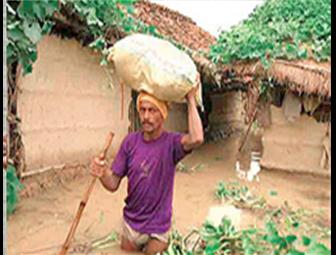Rainfall-Runoff Modeling for Bagmati Basin and Flood Loss Estimation in the Gaur Municipality, Nepal
Descriptions
The objectives of this project were: 1) To generate a flood hydrograph by rainfall-runoff modelling, 2) To prepare flood hazard maps for different return periods, 3) To estimate the direct flood damage due to an extreme event, 4) To outline flood forecasting and early warning system.
The study area of this project was Gaur municipality in Nepal. This study developed a framework for basin scale rainfall-runoff/flood modelling, hazard mapping and flood damage estimation and suggested near real time flood warning system in the study area. The rainfall-runoff model, HEC-HMS was used to convert the precipitation excess to overland flow and channel runoff. The discharge output from the rainfall-runoff model was calibrated against observed discharges. The hydraulic model, HEC-RAS was used to compute the flow profiles along the river as well as inundation area extent and flood depths in the flood plain for peak flows corresponding to return periods of 2, 5, 10, 20, 50 and 100 years. Inundation area was computed corresponding to these six flood events. Statistical model was also used to predict the peak discharge at the upstream end of the flood plain in Bagmati River using TRMM-3B42RT rainfall data. The model predicted the peak discharge well. Analysis of field survey data on flood damage showed a high correlation between flood damage and depth of flood compared to other variables like building age, plinth height, number of storey and flood duration. Orthophoto of 1999 was used to digitize the building footprints and for preparing building database in combination with the field survey data. Depth damage curves for different house types (e.g. adobe, brick masonry and reinforced cement concrete frame) were produced. The flood damage functions were used to calculate the direct flood damage in the Gaur municipality area for a flood event having a return period of 50 years and flood loss maps were prepared. Loss function was also generated for agricultural damage. The estimated structural damage to residential and commercial buildings was found to be Nepali Rupees 225 million, more than 10 times the annual budget of the municipality, showing the severity of the economic impact of flooding in the study area.

